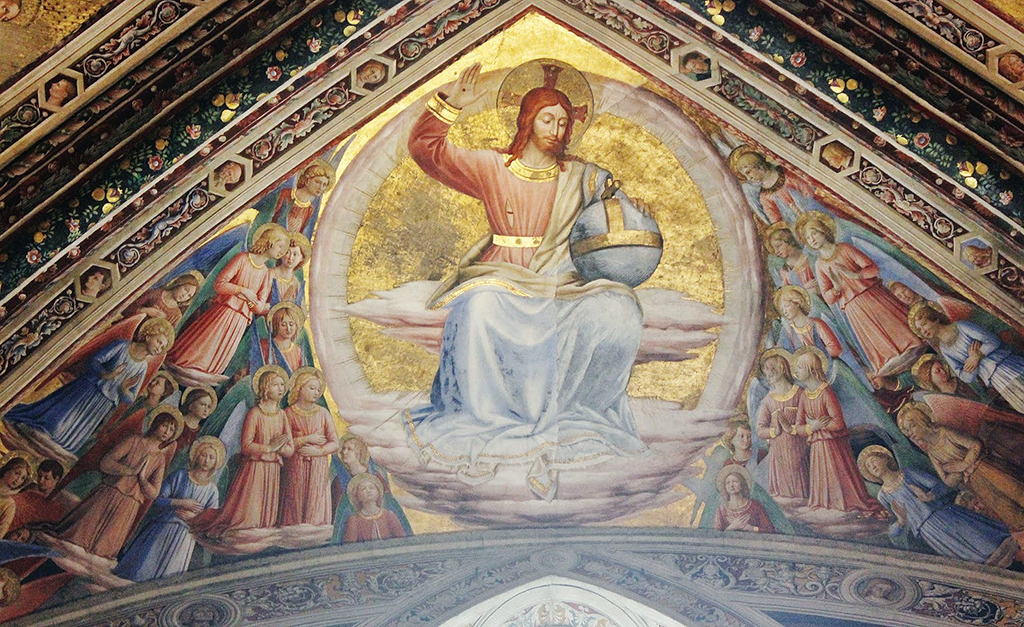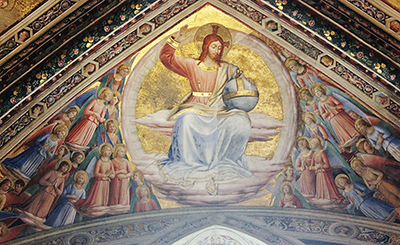Artist Fra Angelico would work alongside one of his favoured assistants, Benozzo Gozzoli, on a series of frescoes for the Duomo of Orvieto. This work would include Christ Seated in Judgment as well as Sixteen Prophets, both of which were produced in the middle of 1447.
The painting in front of us here features a central point in which Christ is sat, with two triangular shapes then jutting off into opposing directions in order to complete the unusual shape of this piece. The wing-like parts are filled with a number of figures, added densely into the available space. They sport smart clothing in tones of blue, pink and green and calmly look on. Small clouds are added below them in order to give the impression of them floating within the sky as judgement is cast upon Christ. He appears in front of a background of golden paint, and he is deliberately much larger than the supporting figures to his side. The Early Renaissance regularly featured unusually shaped artworks such as this because of how they would be custom built for specific spots within religious buildings, such as churches and chapels. They were not produced with any conscious thought of how they might be removed at a later date, or displayed elsewhere.
It is important to actually view all of the frescoes added to the chapel together in order to really understand and appreciate the work produced in this incredible location. Many believe that Michelangelo's Last Judgement was inspired by elements of the work added here. Christ himself dominates the wall, with all surrounding frescoes inter-linked to his iconic appearance. The overall scene is uplifting and would have inspired many of the congregation over the past few centuries. Throughout the Renaissance churches and chapels would compete with each other to produce the most impressive decor, though much was later stolen or destroyed as the various kingdoms came under attack from neighbouring Italian regions as well as from foreign forces as well. These frescoes came towards the end of Fra Angelico's career, and by this stage he was happily working alongside others and would sometimes take an advisory role on some projects.
Some of the designs for this chapel were actually completed decades after Fra Angelico's death, mostly by another highly regarded artist by the name of Luca Signorelli. It was regularly necessary to pass projects on through the generations because of the logistical challenges of some of these installed projects, where paintings could take years to complete. There would also be cases elsewhere in which tastes would change and work would be replaced as new artists brought about alternative styles. Thankfully, this was rarer and in most cases the work of the most famous artists would remain entirely in tact for centuries to come. The larger buildings would also have plenty of room to house new ideas, such as further rooms in the chapel or newly added sections.





